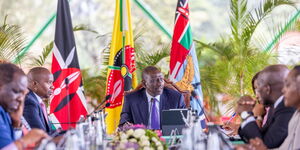Armed with a curious mind and a need to help, 15-year-old Douglas Macartney, 19, invented the flatpack wind turbine to solve electricity challenges in Kenya.
In a school competition held in 2018, Macartney presented his prototype, and over the years, it has been improved to be fully functional.
The UK student from the Royal High School in Edinburgh was inspired by IKEA to build a flatpack refugee shelter.
"I quite liked the simplicity of it. I thought of doing the same thing but with something that would have an energy use in a refugee camp," stated the young inventor.
Undergraduate engineers from Glasgow Caledonian University (GCU) refined the high-tech invention and added two solar panels.
Macartney was elated to work with the team of engineers noting, "I have found it interesting to see how it has evolved over time and the process involved in working on a project like this."
"It has been developed way beyond what I would have thought possible when I was coming up with the design," he added.
Interestingly, the device can be assembled without any specialist training. It is aimed at helping areas recovering from natural disasters and rural settlements.
"The wind turbine was made to generate enough electricity to power a light and two USBs sockets in a disaster relief zone or a refugee camp,"
"This technology would be able to improve energy access by making it affordable, reliable, and low carbon," stated Andrew Cowell, a senior teacher at GCU university.
"Local communities will be trained on the assembly and use of the device," Cowell added.
Notably, the project will be titled, Angaza Africa. It is set to start on March 1 and run for 12 months, including field trails at suitable locations in Scotland and Kenya.
Furthermore, the project has attracted funding from the Innovate UK Energy Catalyst program. It is part of 64 innovations to share the funding of Ksh3.8 billion (£26 million).












